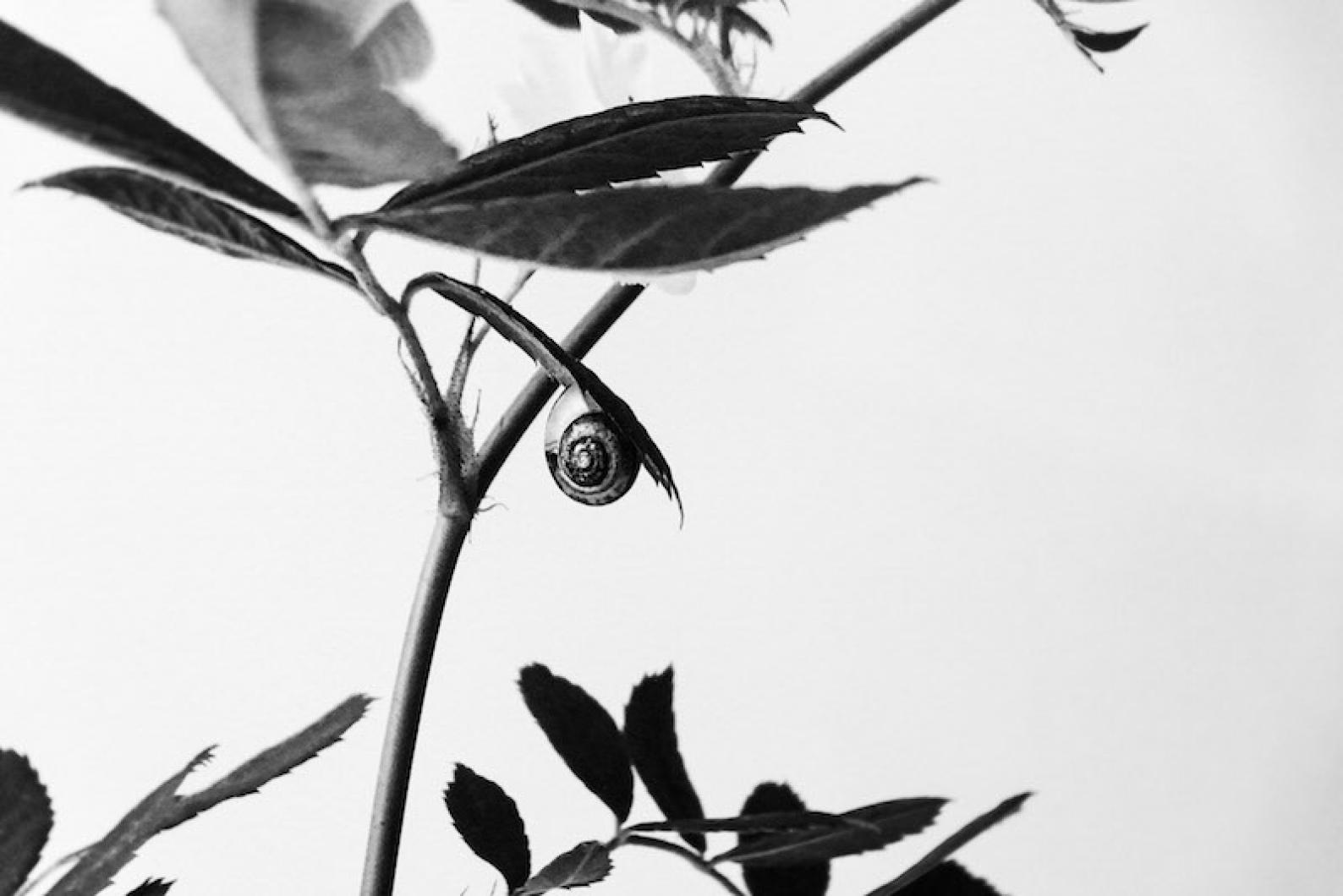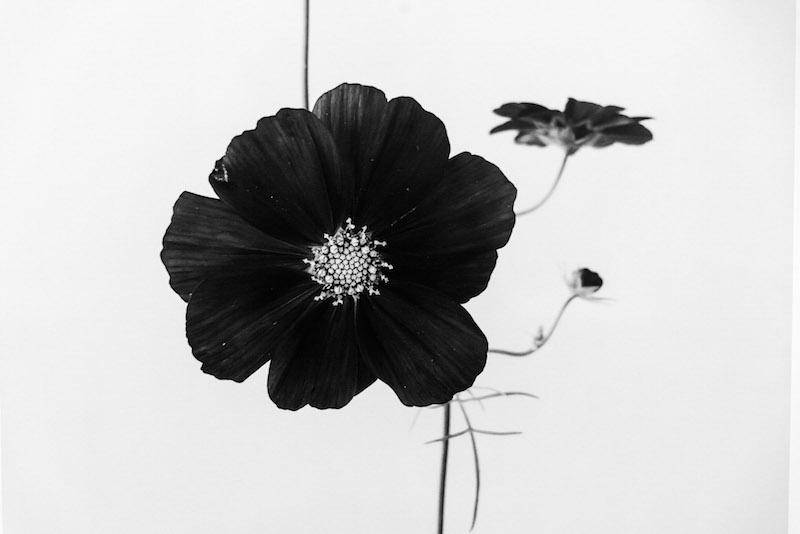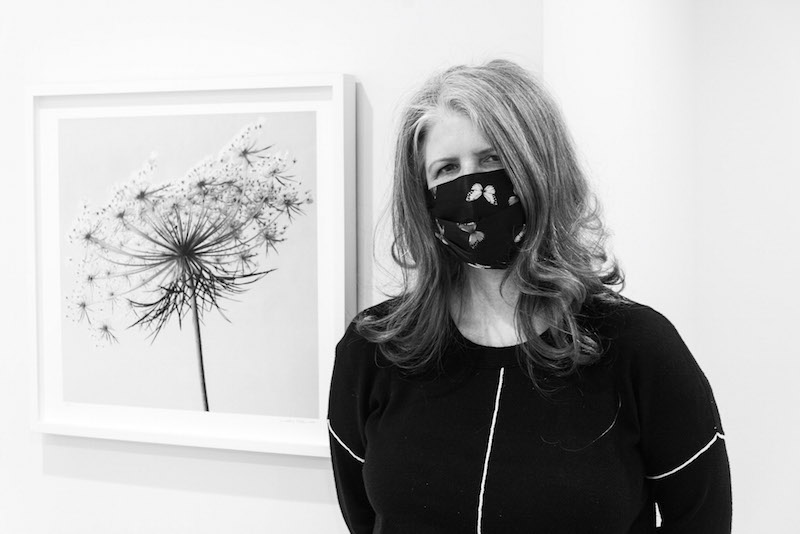A new exhibition of photographs at the Carnegie in Edgartown offers a different way of looking at Island flowers. Instead of shooting sumptuous masses of blooming plants or brightly-colored bouquets, Edgartown artist Libby Ellis worked in black and white to capture nine closely-shot images of single blooms and small sprays from local gardens and farms.
“I had been photographing flowers in color and feeling like color has a narrative, and I didn’t really want it to be about the narrative of color,” Ms. Ellis told the Gazette. “It was too distracting.”
She switched over fully to black and white as she began recovering from a traumatic brain injury, sustained when her vehicle was rear-ended almost two years ago.
“I was so sensitive to light and to color,” Ms. Ellis said. “I realized … I need to go back to black and white photography because I think that’s the way to communicate what I’m feeling—not what I’m seeing, but what I’m feeling—from the flowers.”
Shot from a variety of intimate angles, her new images—all created in 2020—read much like portraits, each with its own character.
There’s the unfurling parrot tulip, its stripes still vivid; the sun-seeking Queen Anne’s Lace, turning its twiggy back to the viewer; the fluted petals of a mallow. Five stems of cosmos, with their thready leaves and nodding flower heads, appear to have posed for a family photo.
All of the flowers were harvested on the Vineyard, in season, from plants she has watched as they grew, Ms. Ellis said.
“That’s one of the most important things for me,” she said. “For years I’ve bought exotic flowers and photographed them, and it is not the same. I can’t do it any more. I can still buy them and admire them, but the relationship is different.”
One of Ms. Ellis’s favorites in the current show, Rosa moschata/Musk Rose, sidelines the blossom in favor of a spiral-shelled hitchhiker that rode in on its stem.
“I cut that one at night, I brought it inside and put it in water, and I did not even see the snail until the next morning when I sat to meditate,” she said.
“The roses are beautiful, too, but it’s not about the rose.”
Meditating on the flowers before she photographs them is part of the process that goes into making her images, Ms. Ellis said.
“I think that’s what allows me to receive the calmness that people are communicating to me that they feel in the presence of them,” she said.
Ms. Ellis titled her show Joyful Participation in a World of Sorrows, which she said translates from a Japanese phrase concerning impermanence and is a concept also propounded by the late Joseph Campbell.
“Even as a child I was aware of a temporality, a fleetingness,” she said. The challenge, she added, is “how to hold that and still participate in a very open, optimistic way.”
Ms. Ellis’s exhibition is on display through Nov. 7 at the Carnegie, which is open Tuesday through Friday from 10 a.m. to 5 p.m. and Saturday from noon to 5 p.m. through October, and Thursday through Saturday from 10 a.m. to 5 p.m. in November. On Oct. 29 at 4 p.m., Ms. Ellis joins Barbara Dacey for an online conversation about life, art and nature, featuring photographs from the exhibition. To register for an invitation to attend, email melissa@mvpreservation.org.






Comments (1)
Comments
Comment policy »